The 1960s porn scene marks a unique crossover period between two very different styles of adult content: antique vintage porn (pre-1960s) and the Golden Age of porn (1969-1986).
The sixties are remembered for an uprising of liberal attitudes towards sex – and it’s the decade that is largely defined by sexual revolution. So, surely the sixties had some good sex movies, right?
Yes, but not until the latter half of the sixties. The earlier years are a story of sexploitation flicks, 8mm loops and peep show reels (most of which are all but lost to history).
The Golden Age didn’t officially kick off until 1969, but this decade saw the arrival of several legendary 1960s porn stars – including: Rene Bond, Marsha Jordan and John Holmes.
In our 1960s porn guide, I’ll take you back to the rapidly changing porn industry during this influential period. We look at some of the earliest adult movies, as well as the top 60s porn stars (men and women).
If you enjoy this guide, don’t forget to check out the rest of my series, covering the 1970s, 1980s and 1990s!
Porn in the 1960s: An Industry In The Shadows
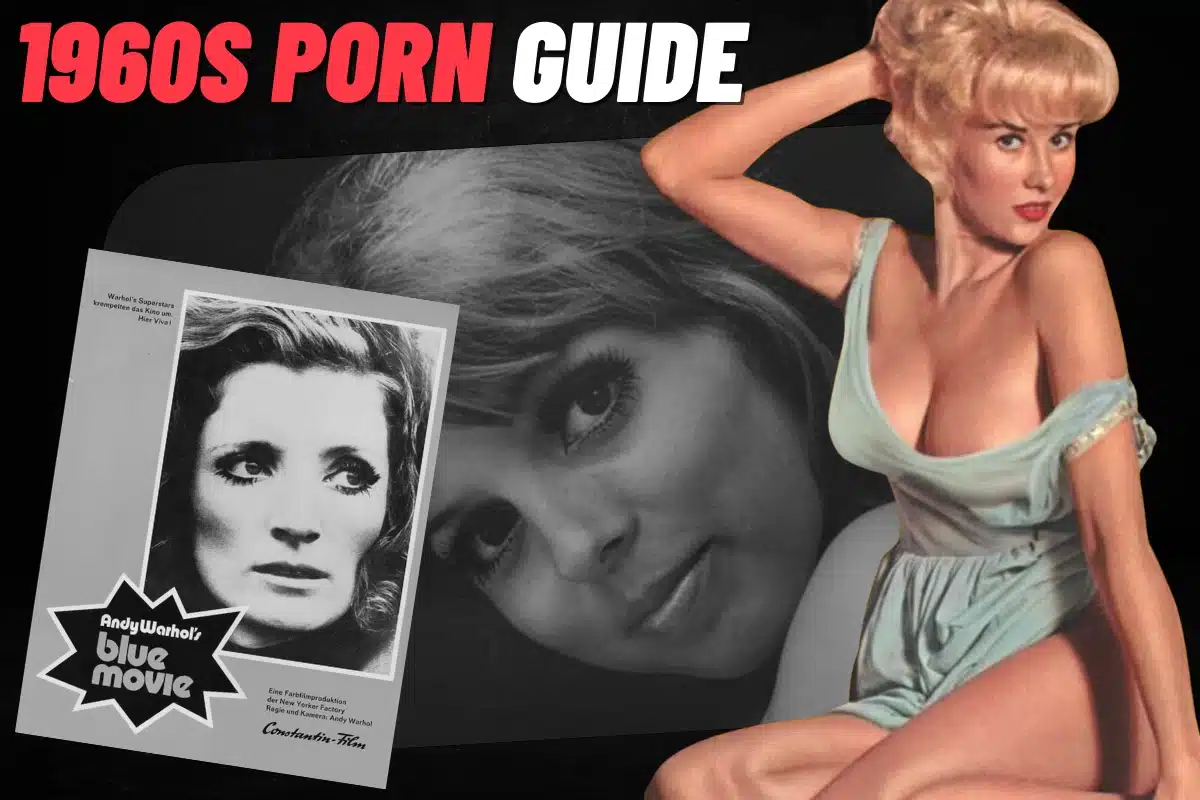
Porn made during the period 1960-1969 falls into the category of Classic Vintage Porn which also includes content made during the 1970s and early 1980s.
A lot of the sex in porn of this period was pantomimed, and softcore/nudity were very much the order of the day.
In general, 1960s porn movies are referred to as sexploitation films and are low budget in style and independently produced. Many were churned out in a few days as a way of cashing in on the rising demand for softcore films.
They generally depict gratuitous nudity and non-explicit sex and many were intended for the grindhouse theaters, hence these films are sometimes called ‘grindies’.
A separate genre of 60s films that do not show sex – but do include nudity – are known as nudie-cuties or nudies.
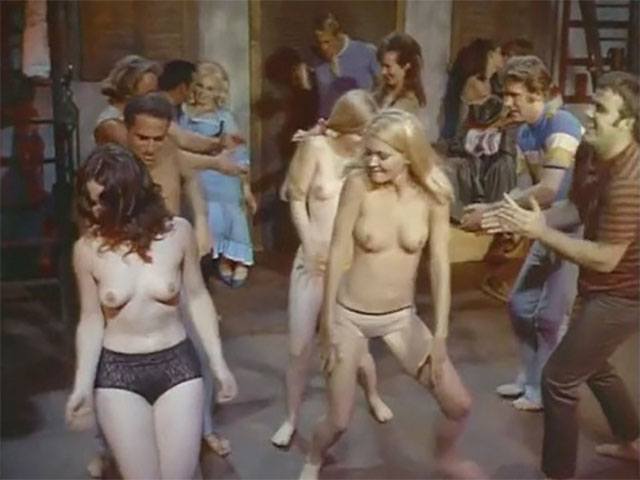
Good Riddance to the Hays Code
Whilst sex on screen had been evolving alongside the mainstream movie business, due to strict censorship rules adopted in the 1920s (known as the Hays Code), you couldn’t watch explicit scenes at the cinema.
Remember, this is an age way before the internet and home videos systems, so if you wanted to watch some sexy girls you usually had to go to a burlesque or strip show. As for films you had to see these in an adult movie theater or peep show.
Known as loops (or ‘stag’ reels), these short clips were played in machines that you could find in sex shops and were mainly shot in black and white. With no plot to speak of and without sound, they mainly contained striptease and softcore eroticism; sometimes masturbation and lesbian sex.
Rarely these would contain explicit scenes of penetration and even fetish content. Due to anti-obscenity laws at the time, this kind of content was illegal and though you can find examples, these are not typical of the time.
However, during the 1960s, the film industry in the United States was beginning to adopt a different rating system and more and more previously controversial scenes were able to pass censorship and make it into the mainstream media.
Under the Hays Code, if a man and woman were seen kissing, one foot had to be on the floor at all times whereas under the new classification system (similar to the one we have today), this nonsense was all thrown out of the window.
In fact, by the time the new ratings system finally settled down in the early 1970s, it was already too late and the cat (or sex-kitten) was out of the bag.
The Rise of Sexploitation Films
Soon, the way was paved for sexploitation films, saucy comedies and dark erotic thrillers each showing more and more flesh on screen.
These movies were becoming far more explicit in their content.
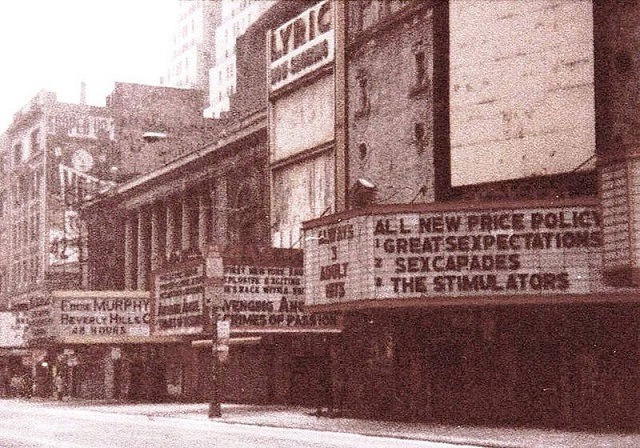
Okay, so a lot of these films might not be classified as porn but it is the very fact that the big film studios were offering more on-screen sex that motivated the 60s porn industry to go even further.
The wave of liberation that was being witnessed outside cinemas was being reflected in art and this new era of licentiousness revolutionized our on-screen entertainment.
In short, softcore porn films were suddenly hitting the movie theaters and the swinging 60s cats were lapping them up.
Launch of the Golden Age
The Golden Age of Porn kicked off at the very end of the sixties, and it marked the birth of the adult industry as we know it today.
Films like Stanley Kubrick’s Lolita (1962) were exploring more and more taboo sexual desires on the big screen and by the end of the decade the United States would get its first adult erotic movie released in the form of Andy Warhol’s Blue Movie (1969).
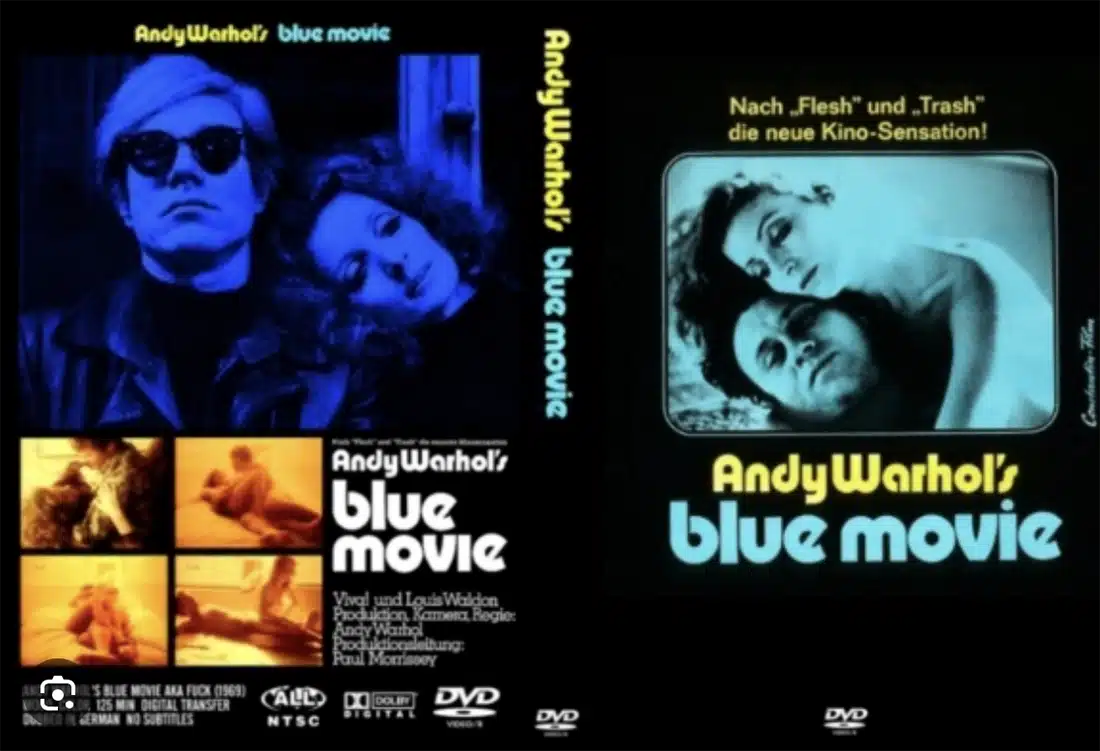
It was this seminal piece of film which started the new wave of pornochic culture in cinema that was to follow in the seventies.
Of course, the porn scene wasn’t just being developed in the United States and much of the more explicit films of this time were being released in Europe. Denmark became the first country in the world to fully legalize pornography in 1967. In Asia, Japanese film makers were also pushing the boundaries of adult film content with their own sexploitation genre; the ‘pinky’.
By the end of the decade, and moving into the early 70s with films like Deep Throat (1972), the 60s sexploitation genre had pretty much had its day.
As the Golden Age kicked off, porn producers were able to work within a new set of censorship laws, creating a rapidly spiralling circle of supply and demand. The appetite for full frontal nudity and explicit sex launched pornography into a whole new stratosphere of popularity.
Notable 1960s Porn Stars
So, who were the stars of the 1960s porn scene?
In the early part of this decade, the nude-cuties and loops often feature pin-up models and strip tease dancers. Many would use stage names and few were even credited at all.
However, as the 60s adult film business became more legitimate and sexploitation movies reached wider audiences, there were many actors and performers who became well known for their work in adult cinema.
Some of these went on to become big name porn stars in the 1970s; both Linda Lovelace and John Holmes started their careers in the 1960s.
Best Female Porn Stars of the 60s
Ladies first!
Below I’ve curated a list of 15 famous female porn stars from the 1960s era. Admittedly, some of these leading ladies are better known for their work in the decades that followed, but all of them starred in the sixties.
Michelle Angelo
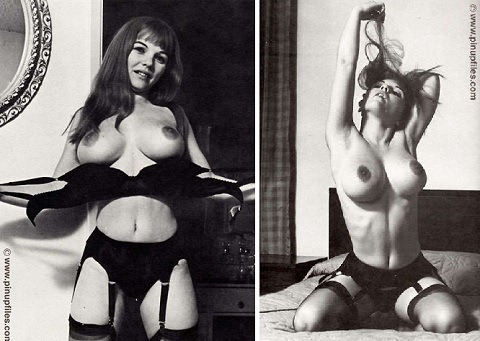
A regular pin-up model for men’s magazines of the day including Playboy, Michelle Angelo was well-known for her ample bosom and puffy nipples. At just five-foot-tall with an E cup breast, she appeared in over 100 magazines and is still regularly featured in the Playboy retrospectives of this 60s and 70s.
Angelo was a high-profile model and one of the first to show pubic hair in her poses.
During the mid to late 60s, she also starred in quite a few feature-length films as well as short nudie-cuties loops including:
- Nymphs Anonymous (1968)
- Depravity (1968)
- Branded Women (1968)
- Mondo Hollywood (1967)
- Wild Wild Weekends (1967)
Pat Barrington
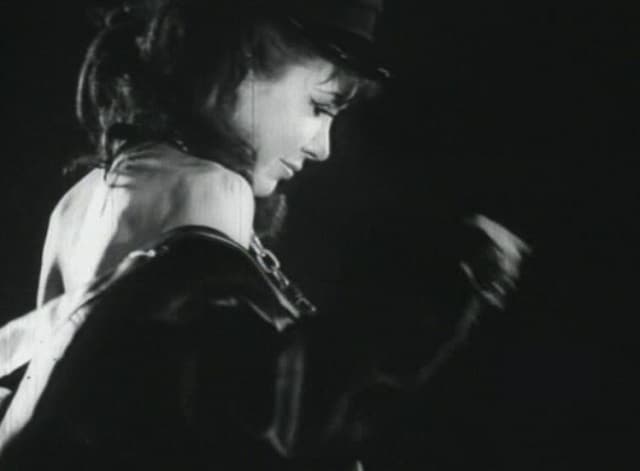
Appearing in several adult films of the era including The Agony of Love (1966) and Mondo Topless (1966), Pat Barrington was a stripper known as Vivian Storm before she hit the theater screens.
She appeared in a few dozen films during the period 1965-1969 before following a more permanent career as a topless dancer. She retired from working strip clubs in the early 1990s.
Her greatest fame is in the cult title Orgy of the Dead in which she performs nude, painted in gold.
Rene Bond
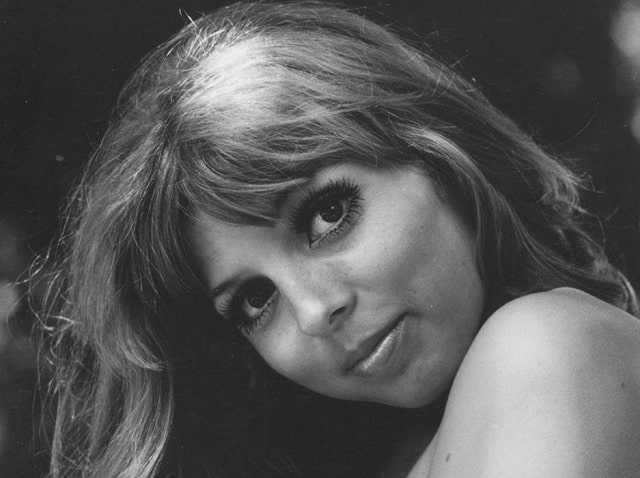
An inductee into both the XRCO Hall of Fame (1985) and winner of the Legend of Erotica Award 1997, Rene Bond is best known for her work in the 1970s, but she actually began her porn career in the late 1960s.
She was a popular casting choice for Harry Novak, a prolific sexploitation producer who was starting to churn out softcore films at the end of the sixties for his company Boxoffice International Pictures.
From softcore to hardcore in the seventies, Bond had an innocence and naivety on-screen that made her appear vulnerable. Combined with her petite figure and doey eyes, she was able to look youthful and this made her a popular on-screen star.
By the late 1970s she was working in burlesque theaters stripping on stage and, according to audiences of the time, often inviting her own father on to stage where she would sing My Heart Belongs to Daddy.
She was one of the first porn stars to have a boob job which was reportedly paid for by Novak in response to the North American culture shift in the late 1970s for large breasts.
Retiring in 1980, Bond made over 300 films and loops over the course of her career but most of the feature length titles she appeared in are from the 1970s.
Christine Carter
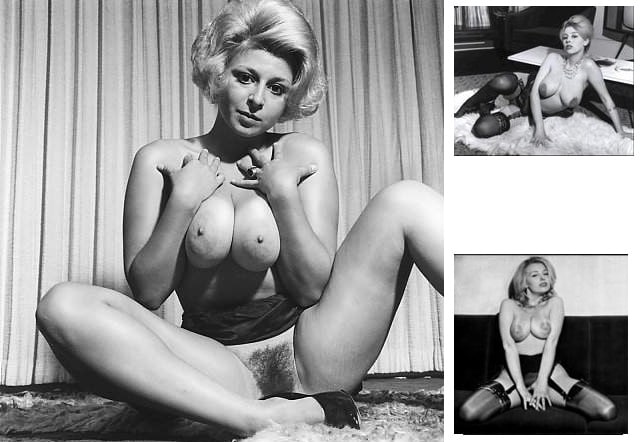
A British pin-up from the 1960s who was a popular nude and topless model, Chris Carter also appeared in a couple of adult movies including Dream of an Apartment – Venus Films No 49 and The Dream World of Harrison Marks.
Despite censorship issues, the latter film ran in the West End theaters of London for over a year and was a saucy pseudo-comedy that had plenty of nudity — but no sex scenes.
Carter also modeled nude and appeared in many gent’s magazines of the day including Parade, Joy, Monsieur and Escapade.
Uschi Digard
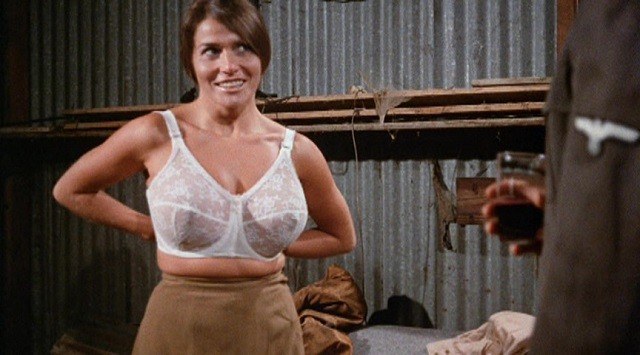
A favorite of the film director Russ Meyer, Uschi Digard was a Swedish porn star of the late 1960s and early 1970s.
She starred in several erotic films in her homeland of Sweden before working in the U.S. on sexploitation tiles like Cherry, Harry, and Raquel! (1969), The Big Snatch (1968) and Sappho, Darling (1968).
With an F cup, she was often cast in feature films which made the most of her ample chest and she famously appeared in several ‘wrestling’ bouts with other big-boob models including Battle of the Bosoms (1980) with Candy Samples.
Digard was more active in the 1970s than the 1960s when she worked with the likes of John Holmes and shot cult works like Ilsa, She Wolf of the S.S. (1974) and Female Chauvinists (1976).
She also appeared in dozens of men’s magazines during the 1960s as a nude and topless model/centerfold.
Uta Erickson
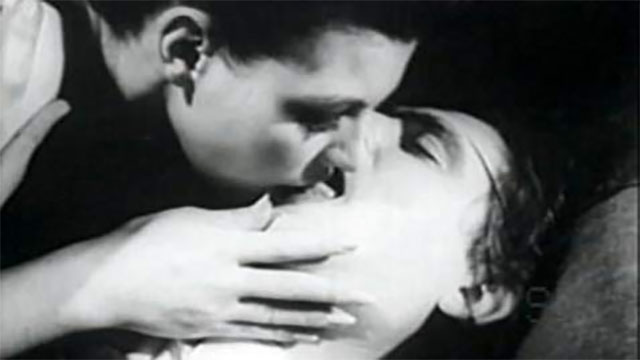
Also known as Carla Erikson or Artemidia Grillet, Uta Erickson was a Norwegian adult performer who worked with the husband and wife filmmakers, Michael and Roberta Findlay. She was also a favorite for Doris Wishman, while she also worked with directors like Joe Sarno and Barry Mahon.
She was a darling of the softcore scene, lending an air of European eroticism to her movies that tipped them into the arthouse genre rather than a regular ‘grindie’.
Her best work can be seen in the 1969 titles, Passion in Hot Hollows and Mnasidika.
Kellie Everts
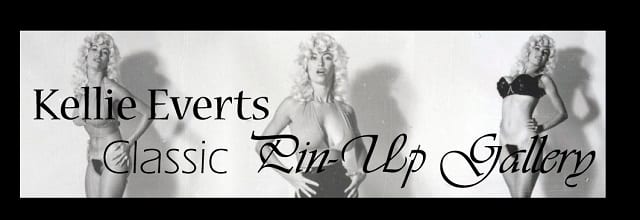
Miss Nude Universe in 1967, Kellie Everts was a bodybuilder and stripper as well as making appearances in several adult movies, She was born in West Germany in 1945 and moved to the United States in the early 1950s starting a carer in front of the camera in 1966 in The Girls on F Street.
This was followed up with The Swinger (1966) and She Did It His Way! (1968). She also made a couple of films in the 1980s including Lesbian Love Slave (1989) in which a submissive beauty is dominated by two stacked blondes.
Everts went on to found her own evangelist church giving sermons up and down the United States, often preaching from burlesque theaters and nightclubs. She continues to spread her word as Guru Rasa of the Church of MotherGod.
Marsha Jordan
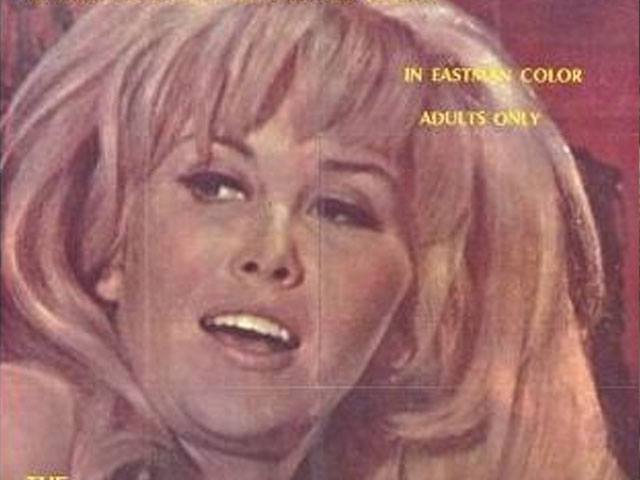
Known as the Queen of Softcore during the 60s and 70s, Marsha Jordan was one of the big names of the sexploitation film era. A buxom blonde also known as Marge Wilson or Carol Peters, Jordan appeared in films alongside other stars of the Golden Age including Candy Samples, Uschi Digard (see above) and Valerie Clarke.
She even worked on some mainstream movies as well as an Ed Wood film in 1972 (Snow Bunnies) and some other sex comedy films. She has a bit of a cult following and you can catch some of her early 60s striptease loops over at the Archive.
Her filmography from this decade includes:
- From Woman To Woman To Woman (1966)
- Office Love-In (1968)
- Brand of Shame (1968)
- The Muthers (1968)
- Her Odd Tastes (1968)
- College Girls Confidential (1968)
- The Head Mistress (1968)
- Lady Godiva Rides (1969)
- The House Near the Prado (1969)
- The Ramrodder (1969)
Tamaki Katori
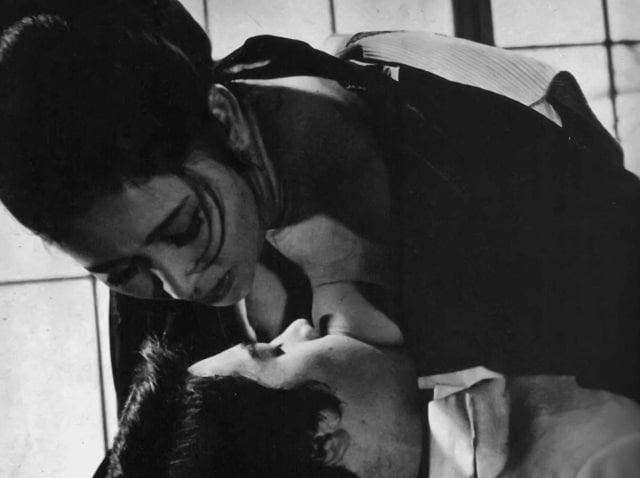
With over 600 film credits to her name, Tamaki Katori was a prolific Japanese porn star of the 1960s and 1970s. She was one of the most well-known names of the pink film industry and starred in the first known title to come to be released in this genre; Flesh Market (1962).
Known by her fans as the ‘pink princess’, Katori was talent spotted at a Miss Universe beauty pageant by Nikkatsu; Japan’s oldest major film studio.
At the time of her debut film, nudity was banned and the film was shut down in cinemas by the police and was heavily censored. However, the boom for this kind of content was to dominate Japanese theaters over the 60s and 70s and Katori was at the spearhead of this movement.
Whilst female sexploitation stars in the West were working for low-budget movies, she was being offered huge sums of money to appear in pink films.
Katori worked with one of the country’s most sensationalistic directors, Giichi Nishihara, who was dubbed ‘Japan’s sleaziest movie-maker’ by critics. However, Nishihara had a cult following and combined with Katori’s baby face and big boobs, the pair made movies that were, commercially, hugely successful.
She retired from the industry in 1972.
Linda Lovelace
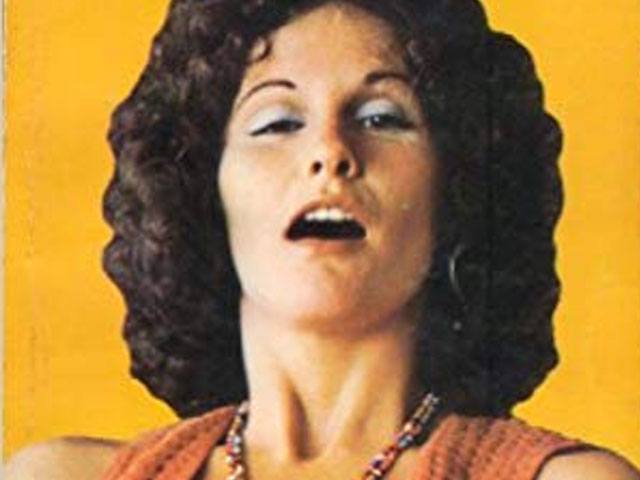
Launched to fame as the star of the 1970s porn classic, Deep Throat (1972), Linda Lovelace was initially introduced to the porn scene in the late 1960s. She would go on to become one of the most popular female porn stars of all time (and certainly one of the most famous!).
Real name, Linda Boreman, she has alleged that she was coerced by her boyfriend of the time (Chuck Traynor). Lovelace started out making a series of hardcore 8mm loops made for peep shows and featured in several fetish films which include bestiality, Dogarama (1969) and urolagnia, Piss Orgy (1971).
Though her legacy in porn is overshadowed by the accusations levied by Lovelace over abuse and coercion, she remains an iconic figure who found her roots in the 1960s adult film industry.
Candy Morrison
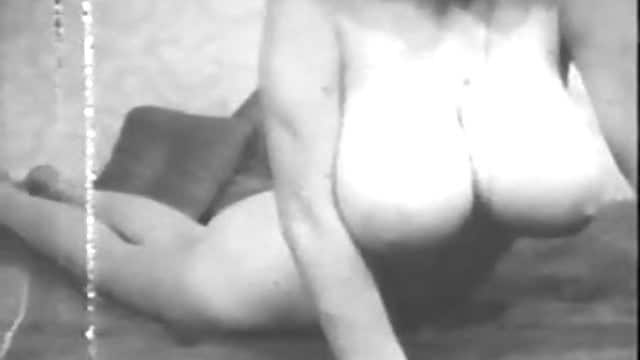
Also known as Darlene Grey, Angela Carter and Vivian Moyer, Candy Morrison was a British pin-up during the 1960s who was allegedly rejected by Playboy magazine because her breasts were too large!
An all-natural 36H, but with a petite figure, Morrison was working as a stripper in San Francisco when she was talent spotted by the film director Russ Meyer. Meyer cast her in his 1966 feature movie, Mondo Topless.
The film is a nudie-flick and is more a documentary of the ‘craze’ that was sweeping the United States in the 60s but is worth watching to get a feel for the kind of new landscape that was revolutionizing the Western world during this period.
Meyer was a big name in the sexploitation genre with plenty of ‘grindies’ and ‘roughies’ to his name but this was his first color film and is more French New Wave in style.
Morrison also featured in plenty of men’s magazines during her carer including Gent, Buff, Fling and Gem plus she also starred in a couple of stag reels doing what she did best, stripping off to show her sizable assets.
Janey Reynolds (Frawley)
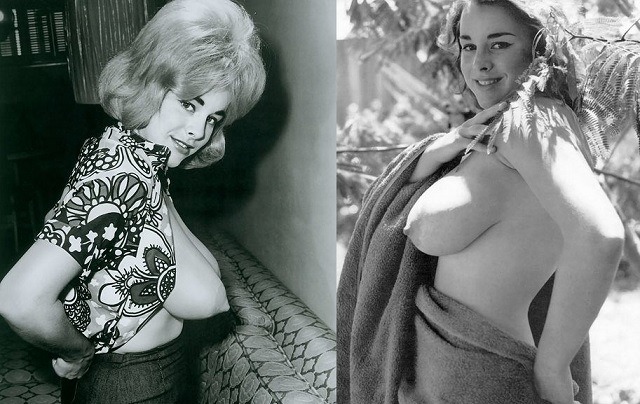
Canadian born Janey Reynolds (also known as Joanne Frawley, Marli Evans and Janey Frawley) was a pin up model of the 1960s who starred in numerous 8mm nudie-cutie loops for peep shows.
She appeared semi-nude in the 1965 Adam Calendar as well as modelling for Man’s World and Rhapsody.
She never appeared full frontal and the reels of her work are all softcore solo stuff but she certainly knew how to work the camera. You can find examples (albeit a little grainy) of just why she is worth mentioning through sites like Vintage Cuties.
Georgina Spelvin
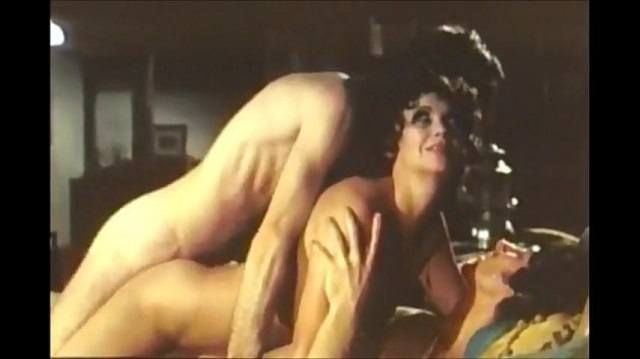
Star of the infamous 1973 porno film, The Devil In Miss Jones, Georgina Spelvin’s name is the feminine form of the stage version of ‘John Doe’, or ‘George Spelvin. It was a popular stage name taken by actors when they played two roles.
Spelvin, born Shelley Bob Graham in 1936 also used several other pseudonyms during her career including Claudia Clitoris, Dorothy May, Merle Miller and Ona Tural.
She made her first adult movie in 1957 in a softcore lesbian film called Twilight Girls and went on to feature in a few more sexploitation titles during the 1960s. Though she didn’t garner commercial fame until the seventies when she started working with porn star Harry Reems, Spelvin learned her craft on the 60’s porn scene.
She is an inductee in the AVN and XRCO Halls of Fame and has won several AFAA Awards during her career, albeit mostly for her work in the 1970s and early 1980s.
Jennifer Welles
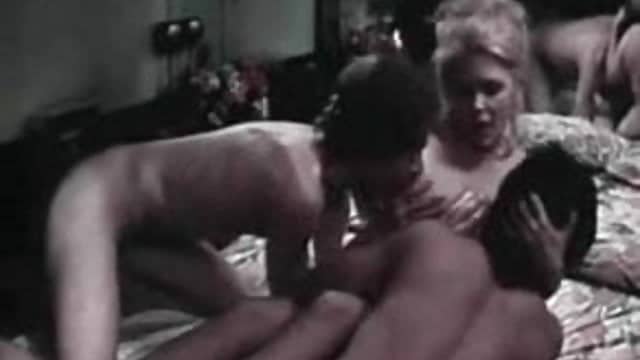
Inducted into the AVN Hall of Fame in 1996, Jennifer Welles’ career spanned from 1967 to 1978. During this period, she worked in both the softcore sexploitation genre and latterly in hardcore.
Her first role was in the film Sex By Advertisement (1967) which was followed up with Career Bed, This Sporting House and Submission in 1969.
She worked with Henri Pachard on several films and went on to star in the hardcore Honeypie (1975) directed by Howard Ziehm.
Winner of the 1977 Erotica Award for Best Actress, Jennifer Welles starred in one of the classic titles of the Golden Age of Porn, the eponymously titled Inside Jennifer Welles (1977). Though she is credited as being the director of this documentary style movie, it was actually another sixties porn icon that took the helm of this project; director Joseph W. Sarno.
Christine Williams
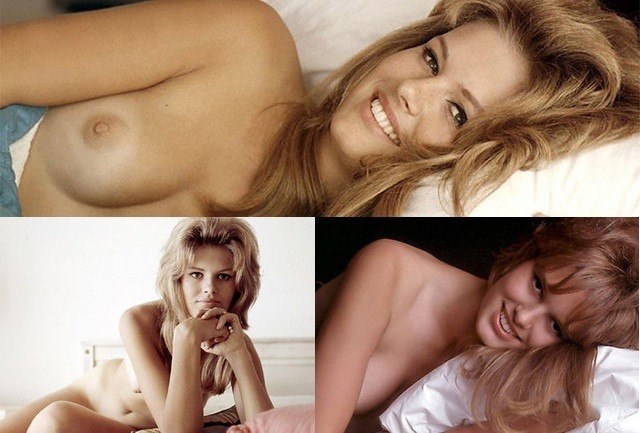
Another British model, Williams was raised in California and became a successful pin-up and actress before making a career as an artist.
She was the Playmate of the Month in the October 1963 issue of Playboy and also starred in The Swinger (1966) and The Naked World of Harrison Marks (1966).
Best Male Porn Stars of the 60s
By contrast to the female porn stars of the 1960s, there aren’t as many male leads; principally this is due to the fact that the majority of porn reels were softcore nudie-flicks and featured only women (solo and couples).
The guys of these films were either uncredited and more anonymous or just not nearly as memorable as their successors in the 70s and 80s.
Remember that although this was an era of sexual revolution, the stigma of porn and adult movies was such that some men would probably have preferred to keep this kind of work off their resume.
That being said, the decade did see some famous male names start their careers, including a couple of icons with legacies that live on to this day.
Casey Donovan
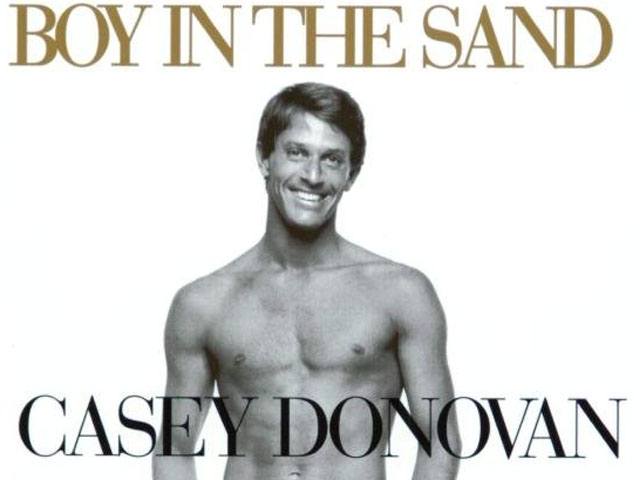
Born John Calvin Culver, Casey Donovan was a lead in American porn films during the late 60s, 70s and early 80s.
He was primarily known as a gay porn star but also starred in several bisexual roles as well as hetero porn movies. The most notable of these performances was in The Opening of Misty Beethoven (1976) in which he played the role of a homosexual art dealer who is seduced by a woman.
His 60s work is pretty much in supporting non-sex roles for low budget sexploitation movies and he really came into his own during the 1970s. However, we are going to bank him as an up-and-coming star from the sixties.
Eric Edwards
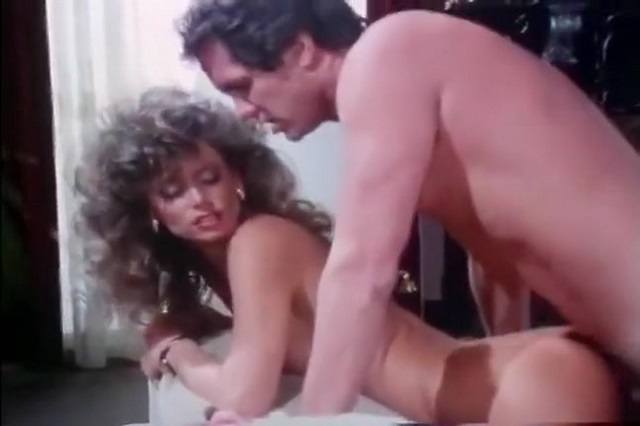
Credited with more than 600 titles during his long career, Eric Edwards made his adult film debut in 1969 in the infamous Dogarama which also starred Linda Lovelace. He continued working through the 1970s, 1980s and 1990s during which time he also directed over 60 titles.
A Hall of Fame member with XRCO and winner of the 1997 Legend of Erotica award, Edwards has won a couple of AVNs and CAFA titles including Best Actor for four films in the 1980s. He was also voted the Male Performer of the Year in 1984
He came to the industry at the very beginning of the Golden Age of Porn and though the bulk of his back catalog is from other periods, he cut his teeth at the end of the sixties.
John Holmes

Although the fame of John Holmes is owed almost entirely to the body of work that he produced in the 1970s, and he is inextricably linked with this Golden Age of Porn, he actually started out in the business in 1969.
This legendary performer was known for having the longest, thickest and hardest penis in the business, and he made his adult film debut in the 1969 VCA production of Body Lust followed in the same year by Doctor I’m Coming.
The latter was also the career launching film for other 1970s porn stars, Tommy Toole, Anne Perry-Rhine, Eliot March and Walt Davis.
Though we can’t lay claim to him as one of the 1960s most prolific porn stars, we can for the purposes of this piece say that he was definitely the biggest!
Rick Cassidy
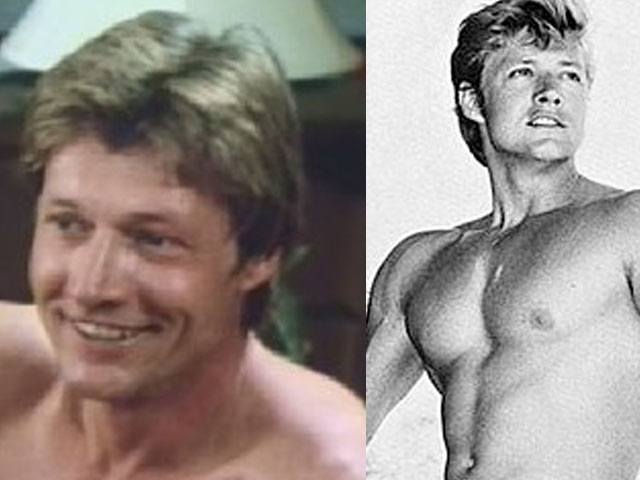
Another male porn star who was known for his homosexual porn roles, Rick Cassidy worked on more hetero movies than gay.
He stepped away from the porn scene in the mid-70s but returned to the screen in the 1980s starring alongside some of the biggest female porn stars of the day.
As well as filming with Ginger Lynn, Christy Canyon and Marilyn Chambers he also shot some scenes with the, then, underage Traci Lords. The resulting scandal forced Cassidy to retire from the adult movie business for good.
Like Casey Donovan, he started out in late 1969 and only just scrapes into this decade by virtue of some early porn work but his career really blossomed in the seventies.
Best Porn Films of the 60s
With the start of this decade being almost seventy years ago, it’s no surprise that many of the top porn titles from the sixties are no longer available.
Many of these 8mm loops and peep show reels are all but lost to history, however there are still some great examples of these titivating performances that have been digitized for posterity and can be viewed on some great vintage porn sites.
If you’re looking to stream some of the best 1960s porn, the sites I’d recommend are The Classic Porn, Delta Of Venus, and Vintage Cuties. All three are strictly dedicated to porn from the classics archive. You can get access to the best full length videos from some of the hottest 60s porn stars.
Below I’ve selected some of the best porn films from the 1960s to cover a range of sexploitation, softcore and hardcore movies.
1960-1962
Slim pickings, I’m afraid!
Of course, there are far more movies to choose from in years like 1968 and 1969 when the Golden Age of Porn was getting into the swing of things, and the genre of adult movies was finally becoming mainstream.
As a result, I don’t have any specific suggestions for films released in 1960, 1961 or 1962; instead, you can find collections of early reels and loops on the vintage porn sites above (or see our full list here).
1963
Of the few films released in 1963 that belong to the nudie-cutie genre, I’ve selected these few that show off the talents of their female stars:
- Gentleman Prefer Nature Girls
- Behind The Nudist Curtain
- Bell, Bare and Beautiful
1964
Another pretty quiet year to choose from, one film for 1964 that deserves a mention is My Tale is Hot. A comedy/erotic film which includes some nice archive footage of the legendary burlesque performer Candy Barr.
Also of note is the film Body of a Female, directed by Michael Findlay, which centers more around sadomasochism than sex but, nevertheless, inspired his later work in the ‘roughie’ genre.
1965
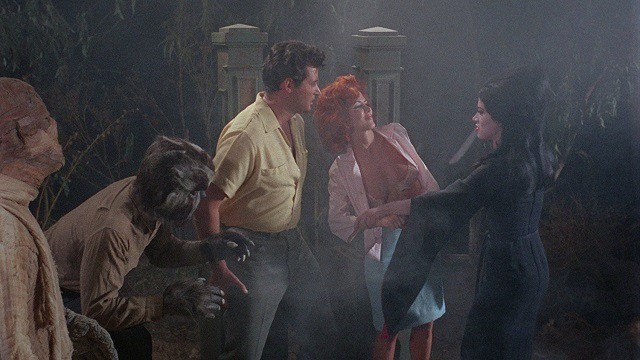
Written by the cult film maker Ed Wood, Orgy of the Dead is an example of nudie-cutie movies of this decade.
Not quite a sexploitation and certainly far from softcore porn as we know it, films of this kind were evolving from burlesque and strip from the stage to the screen. The genre was embracing plot and narrative in order to depict female nudity with Wood opting for an erotic thriller style in this title.
It’s far from being any kind of a ‘classic’ but has gained a little cult status due to the fan following of Ed Wood over the last few decades. Directed by Stephen C. Apostolof, the film features Pat Barrington and the flamboyant stage mentalist known as The Amazing Criswell.
There were some diverse movies released in 1965 and some are more typical of the era, I just think Orgy of the Dead is one of those movies that is so terrible it tips into the good category.
- Bad Girls Go To Hell
- The Wonderful World of Girls
- Soya’s Sytten
- The Hot Bed
- The Incredible Sex Revolution
- Crazy Wild and Crazy
- Lust and the Flesh
- Faster Pussycat! Kill! Kill
- Inseraten-Report
- The Sexploiters
1966
My top selection for 1966 is Hot Nights on the Campus starring Darlene Bennett and Judy Adler.
The film’s tagline ‘No Longer Teenagers, Not Yet Women’ was all the incentive that many audiences needed for this barely legal softcore romp.
Filmed in black and white, the storyline follows a naïve young college girl who arrives in New York. Staying with more ‘worldly’ female roommates, she enters a world of swinging parties and wild abandon, falling in love with both one of her college professors as well as an athletics major.
Softcore with some nudity, this film is typical of the mid-60s in developing a strong narrative with a veiled message and whilst focusing on the sexual aspects, playing this down to stay firmly the right side of the confused censorship rules that were still taking their time to ‘bed-down’.
There are plenty of films which go beyond the limits seen in Hot Nights on the Campus, including Suburbia Confidential and The Notorious Daughter of Fanny Hill.
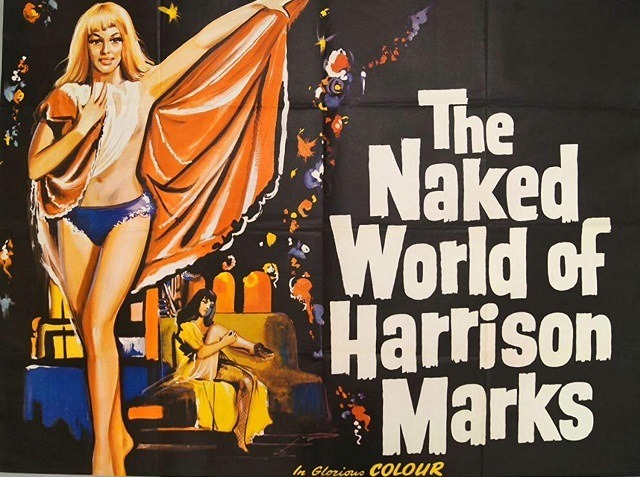
Also of note from this year was the British pseudo-documentary, The Dream World of Harrison Marks. With plenty of nudity, this Brit-flick had lots of trouble with censorship yet still managed to play to big audiences in the West End of London for over a year.
Other films released in this year include:
- Carmen Baby
- The Girl From S.I.N.
- Mondo Topless
- The Swinger
- Mondo Keyhole
- Take Me Naked
- From Woman To Woman To Woman
- Electronic Lover
- Olga’s Dance Hall Girls
- The Agony of Love
1967
My pick of 1967 goes to Miniskirt Love, a softcore movie directed by Lou Campa, starring Janet Banzet and Jean Smith alongside Donny Lee.
With scenes of nudity and masturbation, this black and white sexploitation film follows a voyeuristic son who catches his mom in action with one ‘Peter Johnson’.
Having captured the action on camera, mom tries to commit suicide but accidentally stabs her upset husband….don’t feel too sorry for him, he is getting in on with a black prostitute.
With mom shipped to the nearest loony bin, the son is taken in by a sexually repressed aunt (Banzet) who is quickly showing him how maternal love should be done. No sooner is in the house than she is soaping him up in the shower, masturbating to the pictures of her sister and Mr Johnson before hopping into bed with her nephew.
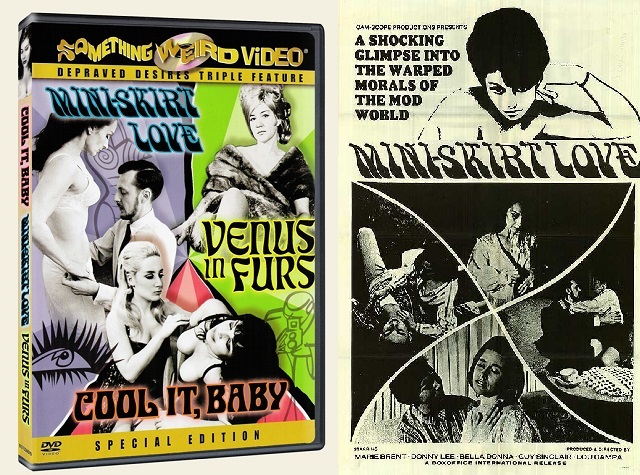
It’s a cacophony of taboo sequences that aren’t explicit by our standards but certainly hold an appeal even today. Lou Campa was known for some great ‘roughies’ this film is in his signature style.
Other films from this year include:
- I Was A Man
- I Am Curious (yellow)
- Someone
- Cool It Baby
- The Sex Killer
- Seeds of Sin
- Common Law Cabin
- The Girl With The Hungry Eyes
1968
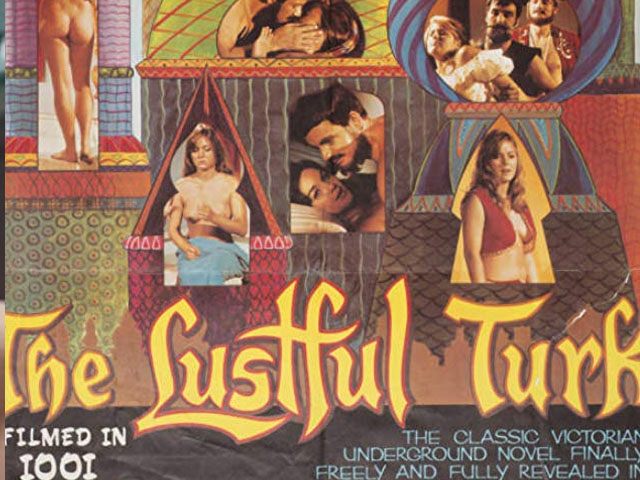
The Lustful Turk is filmed in glorious Technicolor and stars Kathy Williams and Forman Shane in an Arabian tale which sees three women sold into sex slavery with a rich sheikh.
For a sexploitation film, this is actually big-budget and sees some attempts at costumes and a set. Very much a nudie film rather than a graphic porn flick, the title is a good example of another prolific director of the time, David Friedman.
Other films of note from 1968 include:
- Invitation to Ruin
- Too Much Too Often
- Absolutely Secret: Girl Torture (Japanese)
- Love Toy
- Fade To Red
- Inga
- For Single Swingers Only
- I Am Curious (blue)
- Vibrations
- The Curse of Her Love
- All The Way Down
- Night Hustlers
- Sock It To Me Baby
- Smoke and Flesh
- Motel Wives
- The Satanist
1969
My choice for 1969 is another Lou Campa classic in Come On Baby, Light My Fire.
Starring Tina Buckley, Olivia Brandon and Stephanie Bae, the story (written by Ronald Edwards) is one of kidnap, degradation and anti-marijuana laws.
It’s quite a convoluted little plot with a decent twist and some classic softcore porn moments. It’s another example of the strange world of Lou Campa and showcases the beginning of the Golden Age of Porn as music, plot and atmospheric filming combines to create what we now recognize as classic adult cinema.
Other films from 1969 include:
- Back Seat Cabbie
- Linda and Abilene
- Love Feast
- Sisters in Leather
- Shannon’s Women
- Mnasidika
- Hedonistic Pleasures
- Passion in Hot Hollows
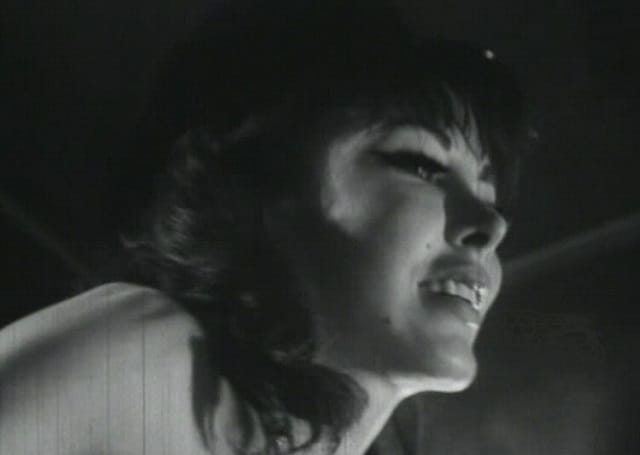
Notable Porn Directors in the 60s
The films above were all brought to the screen by directors and producers looking to exploit the revolution in adult cinema.
Mostly men (but with a handful of women), these filmmakers each had their own style and, unlike the adult industry that was to follow, they were mostly working independently of big studios.
Here are some of the most notable porn directors of the 1960s:
Stephen C. Apostolof
Active from the mid-60s in the sexploitation genre of film, Stephen C. Apostolof was a Bulgarian-American director. He is famous for working with Ed Wood and his films are known for being ‘camp’ and low budget but erotic. The styles of film vary from westerns to comedies, horror to science-fiction.
During his career he worked with many notable nudie actresses of the day including Rene Bond, Marsha Jordan and Kathy Williams.
Some of Apostolof’s more notable films from the 1960s include:
- Orgy of the Dead (1965)
- Suburbia Confidential (1966)
- The Bachelor’s Dreams (1967)
- College Girl Confidential (1968)
- The Divorcee (1969)
- Motel Confidential (1969)
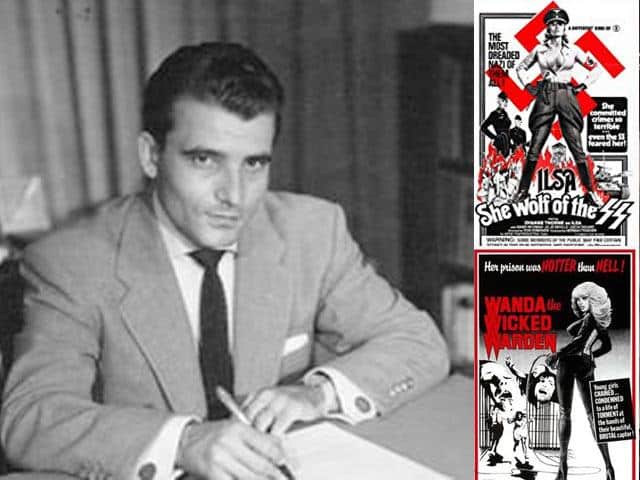
Lou Campa
Part of a group of underground filmmakers in New York during the 1960s, Lou Campa was a producer, actor and director of several notable sexploitation movies.
His later titles were known for being ‘roughies’ and included scenes of sadomasochism, obsession and voyeurism. He is best known for directing:
- Miniskirt Love (1967)
- Cool it Baby (1967)
- Sock It To Me Baby (1968)
- Come on Baby, Light My Fire (1969)
Michael Findlay
Michael Findlay was part of a group of low-budget, independent filmmakers in New York during the 1960s that were creating roughies for the grindhouse market. He worked with his wife, Roberta, and together they have been described as ‘the most notorious filmmakers in the annals of sexploitation’.
Roberta herself went on to direct hardcore movies in the 1970s.
The pair preferred to work with the same actors and some of their favorite performers include Uta Erickson, Janet Banzet and Carol Connors.
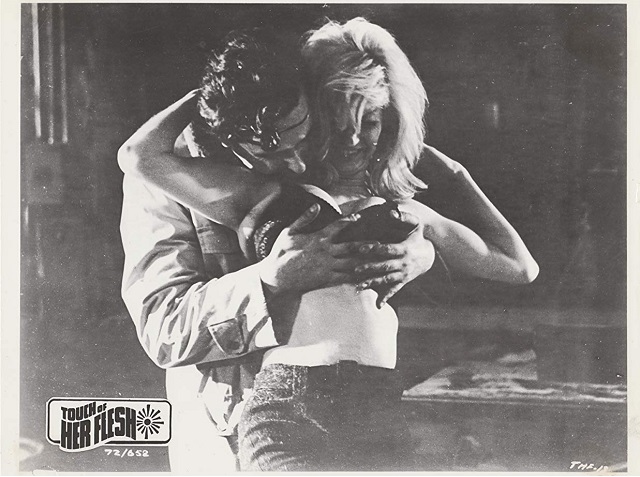
Their best-known work of the 1960s is with their infamous Flesh series which combined sadomasochism and sex cuckolding in what is thought to be the first time on screen. The series was eventually a trilogy of:
- The Touch of Her Flesh (1967)
- The Curse of Her Flesh (1968)
- The Kiss of her Flesh (1968)
Interesting fact… Findlay worked with the then unknown Yoko Ono in his 1965 film, The Sin Syndicate.
Radley Metzger
Known as Henry Paris for many of his adult films, Radley Metzger is best known for directing the 1970s classic, The Opening of Misty Beethoven (1975) for which he won two industry awards for Best Director. He was the first ever recipient for this AFAA award and the film also gave Jamie Gillis (a future pioneer of gonzo porn) the honor of Best Actor.
Metzger became a major name in the adult erotic film genre during the 1960s and worked with plenty of notable film makers, writers, artists and other directors including Andy Warhol and Jean Renoir.
Though his best work certainly belongs to the 1970s, some of his films from this decade include:
- Dictionary of Sex (1964)
- The Dirty Girls (1965)
- The Alley Cats (1966)
- Carmen, Baby (1967)
- Thérèse and Isabelle (1968)
- Camille 2000 (1969)
Russ Meyer
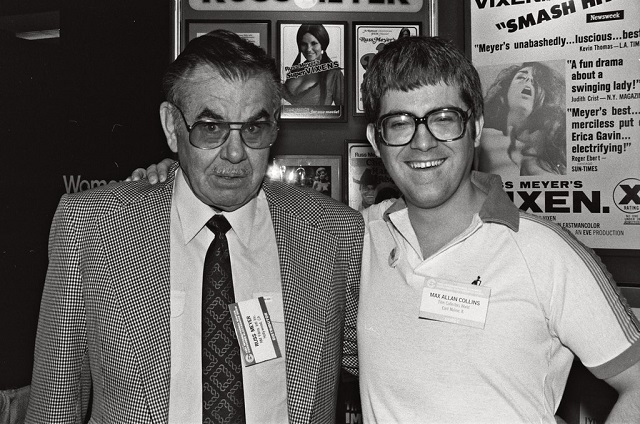
Best known for directing the 1965 classic sexploitation movie Faster, Pussycat! Kill! Kill!, Russ Meyer was an amateur film maker before serving as a U.S. Combat Cameraman in WWII.
When he returned from service, he was unable to find work in the film industry and he started freelancing as a photographer, eventually securing work with Hugh Hefner for Playboy.
He picked up again with film production in the 1950s and produced several controversial titles including one which depicted a woman dying from an illegal abortion.
However, it wasn’t until 1959 with the release of The Immoral Mr. Teas that he cemented his future career as King of the Nudies. The film only cost $24k to make but made connections over $1.5 million in gross sales. Considered one of the first nudie-cutie films, Meyer went on to make a lot of notable sexploitation films in the 60s, including:
- Eve and the Handyman (1961)
- Vixen! (1968)
- Mondo Topless (1966)
- Finders Keepers, Lovers Weepers! (1969)
Meyer worked with most of the best female stars of the day including Uschi Digard, Candy Morrison and Julie Williams.
William Rotsler
More recently known for his cartoons and artwork in the science fiction genre, William Rotsler started out as a pornographer in the 1960s. He famously created the quarterly publication Adam Film in 1966 which provided one of the first commentaries on the porno industry.
He worked with Harry Novak for the film distribution company Boxoffice International Pictures and worked on a few dozen movies both as writer and director as well as an actor. Titles credited to Rotsler include:
- Suburban Pagans (1968)
- Lila (1968)
- The Girl With The Hungry Eyes (1967)
- Four Kinds of Love (1968)
- Agony of Love (1966)
Joseph W. Sarno
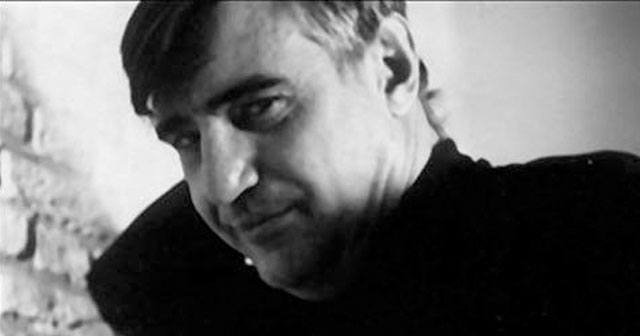
Originally working in the sexploitation genre in the 1950s, Sarno is responsible for over 70 softcore and hardcore porn films of the 1960s.
Famous for his work on the Swedish sexploitation film Inga (1968) which was one of the first X-rated films released in the United States. It marks a transitional period for Sarno from sexploitation to softcore and was followed up with Vibrations (1968) and Passion in Hot Hollows (1969).
Most of his work was filmed in Europe with financial backing from the United States.
By the 1970s, Sarno was working in more explicit cinema and worked on Sleepyhead with Georgina Spelvin for his debut hardcore film. He was reluctant to be associated with this new breed of moviemaking and started to use pseudonyms for his roles on these titles. He was even uncredited for some, including Inside Jennifer Welles (1977) and Deep Inside Annie Sprinkle (1981).
Sarno was the subject of a 2013 documentary (Swedish), A Life In Dirty Movies.
Doris Wishman
Wishman started making films in 1958 after her husband died and she came to the industry more as a hobbyist than for a professional career. However, she showed a certain flair for making nudist and sexploitation films, directing several reasonably popular films during the 1960s including Bad Girls Go To Hell (1965) and Behind The Nudist Curtain (1963).
Her work in the 60s is pretty softcore at best and she really started to get involved in porn during the 1970s including a couple of hardcore films, Satan Was a Lady (1975) and Come With Me, My Love (1976). Wishman also directed the infamous Chesty Morgan in the 1970s in two low budget films during the 70s.
Often working under the name Louis Silverman, her work was often heavily censored by the New York Censor Board including The Sex Perils of Paulette (1965) which starred a young Tony Lo Bianco in his film debut.
Ed Wood
Named posthumously as the Worst Director of all time, Ed Wood was a prolific filmmaker of the 1950s and 1960s; latterly working in the sexploitation and softcore porn genre.
Famously the subject of the 1994 Tim Burton biopic for which Johnny Depp won a Golden Globe, Ed Wood wrote over 80 pulp novels, some of which were adapted for screen either by himself or his long-time collaborator, Stephen C. Apostolof (see above). He also acted in some titles.
Orgy of the Dead (1965) was firmly in the nude-cuties genre and conforms to Wood’s camp signature style of idiosyncratic plot, eccentric and unsophisticated special effects and strange dialog.
It follows the story of a writer who decides to spend the night in a cemetery in order to research a book about necrophilia. The pair are overpowered by nude zombie ladies (all played by active strippers from Los Angeles) and then watch as several are punished by the ‘Emperor’.
His books leaned towards several fetishes including cross dressing (Wood was famously a proud transvestite and could often be seen in public dressed as ‘Sheila’, his female alter ego).
Whilst Wood’s hardcore porn film making was still ahead of him with most of these being filmed in the 1970s, his sixties back catalog have gained a cult following.
Best of the Rest
Other directors of note during the 1960s, particularly in the sexploitation genre, include:
- David F. Friedman
- Satoru Kobayashi
- Stanley Long
- Barry Mahon
- Harrison Marks
- Ted V.Mikels
- Carl Monson
- Harry Novak
- Giichi Nishihara
Where to Watch Porn From The Sixties
So, you’re tempted to dive right in and check out some vintage sixties porn?
My best advice is to leave your expectations at the door. These movies have to be appreciated for the era they were produced in.
While Golden Age movies are similar in style to the movies we see today, early sixties porn marks a huge departure from contemporary adult content.
Best 60s Porn Sites
Fortunately, there are some specialist sites out there that are ideal for sampling porn from the 1960s:
Delta of Venus
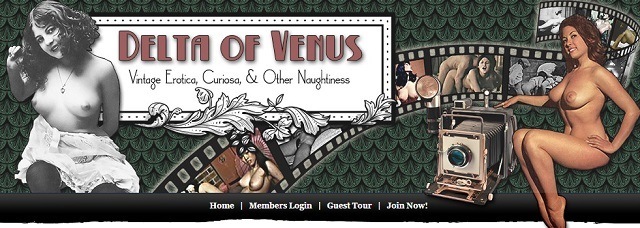
Delta of Venus is a premium porn site that specializes in rare vintage films, loops and reels dating from the early 1900s through to the 1970s. Some are burlesque strip routines whilst others are more explicit.
They also have a great selection of nude and hardcore photos from as early as the Victorian period and cover a really nice range of sixties pin-ups and nudie-cuties.
It’s a nice archive with some good bonus content including erotic animations, full length novels and stories as well as vintage erotic art from around the world. Also, if you like learning about the history of porn then they have some great archives of useful information.
The Classic Porn
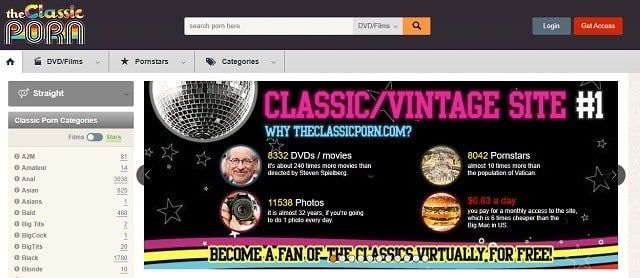
The Classic Porn is another premium archive of full-length retro porn movies. They specialize in the 1970s and 1980s but do have a few hundred movies for the 1960s, including some legendary titles. In total, your membership gives you access to more than 8,000 classic porn films and a further 11,000+ photos.
Vintage Cuties
Vintage Cuties majors in nude pics and erotic loops and reels from the Victorian era and has a vast collection from 1850-1900. However, they also have some great vintage and classic photos and videos from the sixties.
In total, there are more than 190,000 vintage photos, 1,500+ scanned classic magazines and 1,300+ downloadable videos.
Private Classics
Launched in 1965, Private Magazine was a Swedish publication created by Berth Milton Sr. It as the first full-color commercial hardcore porn magazine and the company still exists today.
The Private Media Group now make most of their money from hardcore movies as well as selling access to their vast archives of 1960s, 1970s, 1980s and 1990s vintage porn videos and photosets.
The archive for the 1960s is all about the nude models that featured in their top-shelf magazines but if you enjoy high-quality, full colour snaps from this period then this is definitely a site for you. The models are mostly European for this decade but later photosets include some international names too.
That wraps up our guide to the 1960s Porn Industry. Thanks for reading!
Are there any top stars I’ve missed? Or classic movies you think deserve a mention? Let us know your favorite adult hits and stars of this important crossover period.
If you enjoy this guide, don’t forget to check out the rest of my series, covering the 1970s, 1980s and 1990s!

